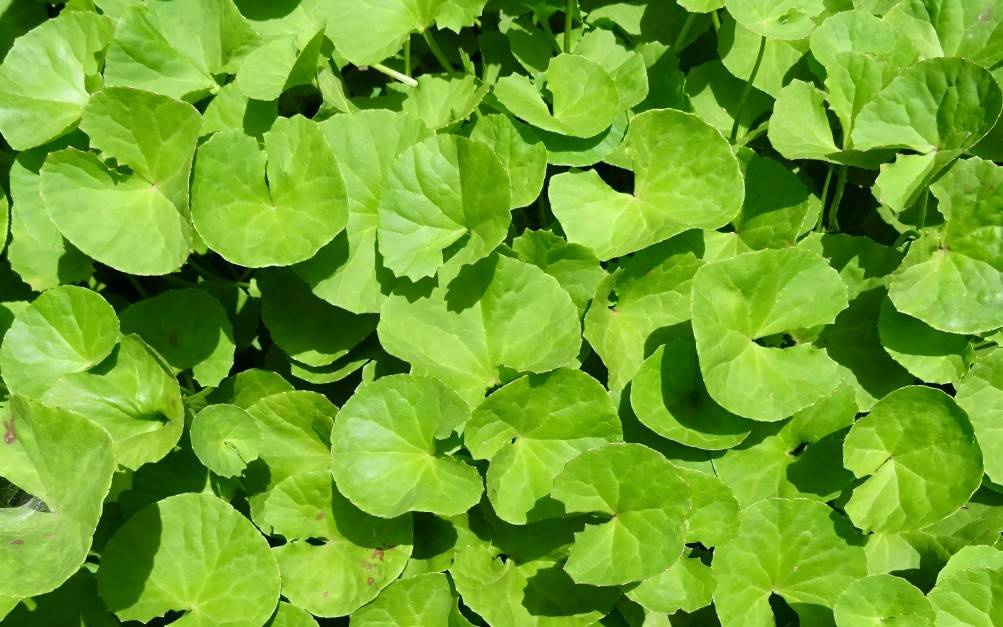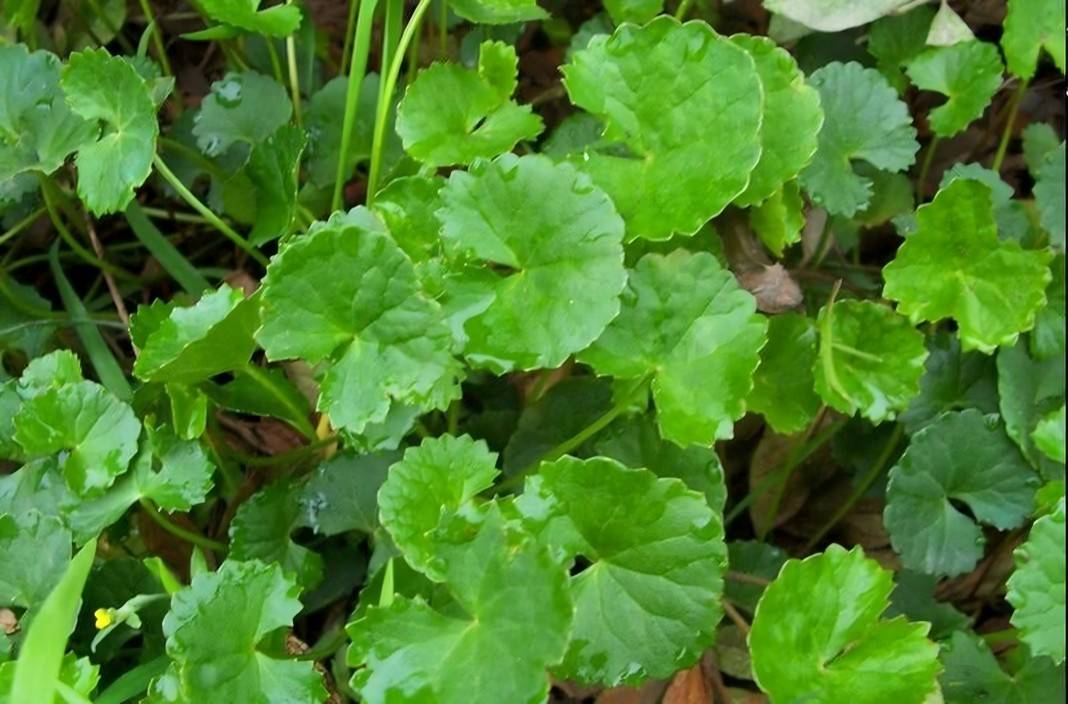What Are the Benefit of Centella Asiatica Extract Asiaticoside?
Centella asiatica, an umbelliferous plant, mainly contains triterpene saponins and has long been used as a medicinal plant. Studies have shown that centella asiatica and its derivatives can act on intracellular signaling molecules and transcription factors, etc., and have potential application value in the treatment of tumors, pulmonary fibrosis, spinal cord injury, cognitive impairment and other diseases [1].
Asiaticoside (AS) is a natural compound extracted from Centella asiatica and is an important component of Centella asiatica triterpene saponins. It is mainly concentrated in the leaves of Centella asiatica. Asiaticoside has a variety of biological effects, such as anti-inflammatory, anti-depressant, anti-fibrosis, osteogenic differentiation, and promoting wound healing. Asiaticoside can inhibit the secretion of nitric oxide (NO) and tumor necrosis factor-α (TNF-α) in macrophages, and regulate inflammatory responses [2]. It can exert biological effects through multiple signal pathways to treat related diseases.
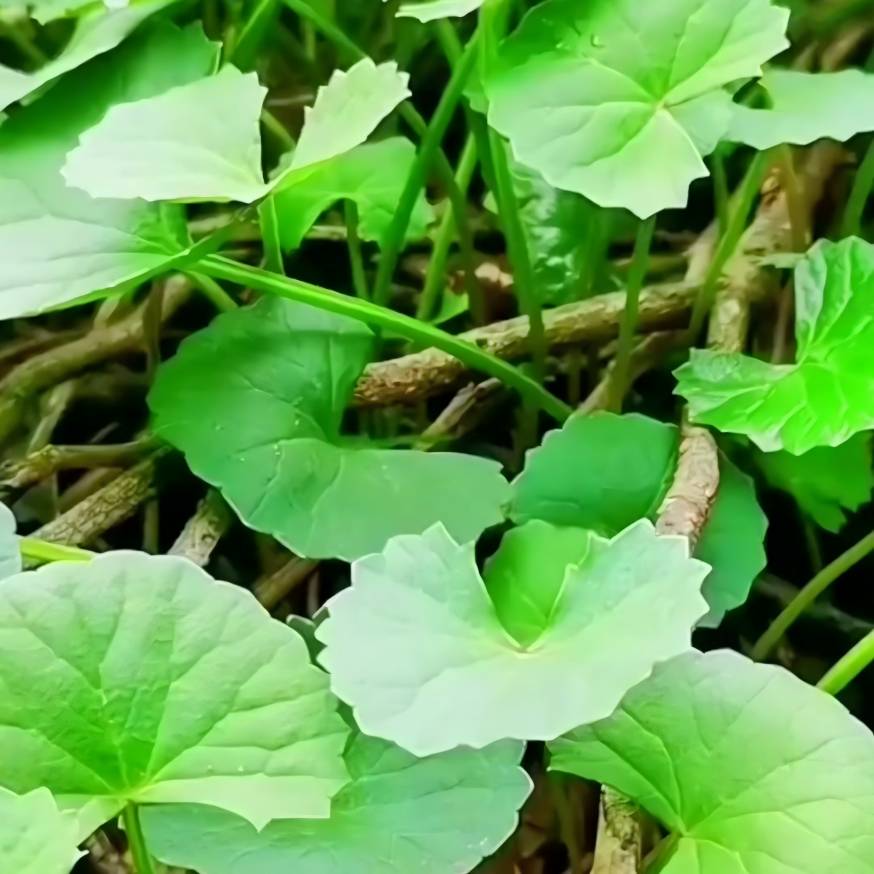
1 TGF-β/Smad signal pathway
This signaling pathway consists of three parts: the TGF-β superfamily, the TGF-β receptor, and the Smads protein family. Transforming growth factor β1 protein (TGF-β1) is a key mediator of fibrosis and inflammation development, and Smad proteins are TGF-β1 receptor downstream signaling factors [3]. Dysregulation of the TGF-β1/Smad pathway is an important pathogenic mechanism of tissue fibrosis, which can lead to fibrosis of the heart, lungs, kidneys, etc. This signal transduction plays an important role in tumor diseases [4]. Asiaticoside can effectively inhibit fibroblast proliferation and collagen synthesis by regulating the TGF-β/Smad signaling pathway, promote wound healing, inhibit scar hyperplasia and the development of fibrosis [5, 6].
A rat model of hypoxia-induced pulmonary hypertension (HPH) was established, and the rats were treated with Asiaticoside for 4 weeks. It was found that AS can reduce the expression of TGF-β1, TGF-β RⅠ and TGF-β RⅡ and inhibit the phosphorylation of Smad2 /3, inhibiting the overactive TGF-β1/Smad2/3 signal transduction and reducing HPH in rats [7]. Asiaticoside can inhibit the TGF-β1 cell signal transduction pathway to reduce the intracellular signal transduction protein Smad-3, reduce the synthesis of extracellular collagen matrix by fibroblasts, and thus produce a protective effect on bleomycin (BLM)-induced rat lung fibrosis [8].
Studies have shown that AS can inhibit the protein and mRNA expression of TGF-β RⅠ and TGF-β RⅡ, and in a dose-time-dependent manner, increase the protein and mRNA expression of Smad 7, which can change the proliferation of fibroblasts and collagen production, and has the potential to prevent the formation and progression of scar tumors [9]. In a mouse model of BLM-induced pulmonary fibrosis, AS treatment increased the levels of bone morphogenetic protein-7 (BMP 7) and p-Smad1/5, and the expression levels in wild-type mice were higher than those in adenosine 2A receptor knockout (A2AR-/-) mice. AS may therefore alleviate BLM-induced lung fibrosis by upregulating the BMP 7/p-Smad1/5 signaling pathway through A2AR [10].
2 Nuclear factor κB (NF-κB) signaling pathway
The NF-κB includes five genes: NF-κB1 (p50/p105), NF-κB2 (p52/p100), RelA (p65), c-Rel and RelB [11]. It is involved in the regulation of a variety of biological responses and is the main regulatory factor of inflammatory responses. essential for the homeostasis of the immune system, and can transcribe and produce various cytokines, including tumor necrosis factor α (TNF-α) and interleukin-(IL-6). Asiaticoside has potential therapeutic advantages for inflammatory diseases by regulating NF-κB signaling.
In mice with acute lung injury (ALI) stimulated by lipopolysaccharide (LPS), Asiaticoside significantly reduced the activation of the NF-κB p65 subunit and the degradation of the IκBα protein, reduced the production of TNF-α and IL-6, inhibited the infiltration of inflammatory cells, alleviated lung inflammation, and exerted an anti-inflammatory effect [12]. The study found that the expression of p-NF-κB, IL-6, and TNF-α in the lung tissue of hypoxic HPH mice was significantly elevated, and the hypoxic + different concentrations of Asiaticoside group was significantly lower than the hypoxic group (P<0.05). Inhibiting the NF-κB signaling pathway to reduce inflammation may be one of the important mechanisms by which Asiaticoside reduces hypoxic HPH [13]. Luo et al. [14] found that in a rat spinal cord injury model, Asiaticoside significantly reduced the activity of NF-κB in the spinal cord. In addition, Asiaticoside can reduce the response of cochlear hair cells to oxidative stress by inhibiting the NF-κB pathway [15], prevent diabetes-related cognitive dysfunction [16], and reduce neonatal hypoxia-ischemic brain injury [17]. Recent studies have found that Asiaticoside's inhibition of RANKL-induced osteoclast formation and bone resorption involves the NF-κB pathway, suggesting that Asiaticoside has the potential to treat osteolytic bone diseases. However, the exact molecular target of Asiaticoside in osteoclasts requires further research [18].
3 Mitogen-activated protein kinase (MAPK) signaling pathway
MAPK is an important signaling pathway that mediates intracellular signals from extracellular stimuli, transmitting extracellular signals to the intracellular to regulate various cellular processes. The classical MAPK pathway mainly includes four branches: ERK, JNK, p38/MAPK and ERK5 [19]. Among these, p38/MAPK activity is essential for normal immune and inflammatory responses and is closely related to many human diseases such as tumors, cardiovascular disease, and neurodegenerative diseases [20].
Studies have found [21] that Asiaticoside plays an important role in the treatment of sepsis, anti-renal toxicity, protection of the liver, and improvement of cognitive dysfunction by blocking the ERK/MAPK and p38/MAPK signaling pathways.
A study on the effect of Asiaticoside on oxidative stress levels and p38/MAPK pathway activation in human peritoneal mesothelial cells induced by hyperglycemic peritoneal dialysis solution (PDS) found that medium (100 μmol/L) and high (150 μmol/L) doses of AS significantly inhibited the PDS-induced upregulation of p-p38/MAPK levels, reduced oxidative stress levels, exert a protective effect on the peritoneum. The high dose of AS has a similar effect as the inhibitor SB203580 [22]. The expression of p-p38 and p-ERK1/2 was detected in cardiomyocytes treated with LPS, and it was found that compared with the LPS group, p-ERK1/2 and p-p38 expression was inhibited after pretreatment with AS at different concentrations, and Asiaticoside inhibited TNF-α production in a concentration-dependent manner, indicating that AS can block LPS-stimulated phosphorylation of ERK1/2 and p38/MAPK in mouse cardiomyocytes, thereby inhibiting the release of the TNF-α inflammatory factor [23]. Luo et al. [14] showed that AS can reduce the effects of spinal cord injury through its antioxidant and anti-inflammatory effects and inhibition of the p38/MAPK mechanism. Chen et al. [24] believe that AS can inhibit the overactivation of the p38/MAPK signaling pathway and the production and release of other mediators such as cytokines (e.g. NO), reduce memory impairment, and exert neuroprotective effects in global cerebral ischemia/reperfusion. Studies have shown that AS can also improve LPS/D-GalN-induced liver damage in mice by inhibiting the expression of TNF-α and MAPKs [25].
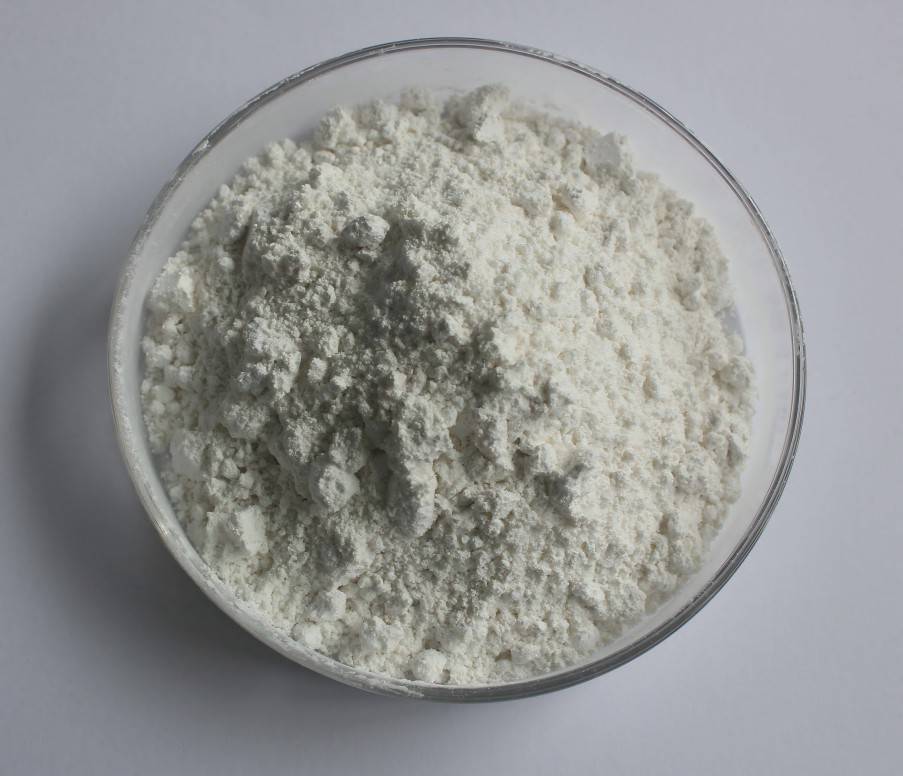
4 cAMP signaling pathway
Protein kinase (PKA), GTP-exchange proteins, cAMP-activated exchange proteins (EPACs) and cyclic nucleotide-gated ion channels (CNG) are the main targets of cAMP. Luo et al. [26] established a BLM-induced lung fibrosis model using A2AR-/- and wild-type (WT) mice, treated with 50 mg/(kg·d) AS, and the RNA was sequenced and analyzed. It was found that AS activated the cAMP and Rap1 signaling pathways and, with the help of A2AR, attenuated BLM-induced lung fibrosis. In the mild unpredictable stress (CMS) mouse model, the expression levels of cAMP, PKA, cAMP response element binding protein (pCREB) and brain-derived neurotrophic factor (BDNF) expression levels were downregulated; this was improved after AS treatment. It is speculated that Asiaticoside activates the cAMP/PKA signaling pathway, which plays an important role in its antidepressant effect. However, further research is needed to determine the mechanism by which Asiaticoside activates PKA signaling and to evaluate its clinical effectiveness in depression or similar diseases [27].
5 Other signaling pathways
The effect of Asiaticoside on the PI3K/Akt pathway and synaptic proteins was assessed using high glucose to stimulate neuroblastoma cells (SH-SY5Y). It was found that AS upregulates synaptic protein expression by attenuating the PI3K/Akt/NF-κB-mediated inflammatory response in SH-SY5Y cells incubated with chronic high glucose, restores the antioxidant capacity of neurons, protects neurons from high glucose damage, and improves spatial learning and memory impairments caused by diabetes [16].
RhoA protein and Rho kinase Ⅰ (ROCK-Ⅰ) are highly expressed in proliferative scar fibroblasts. AS can inhibit fibroblasts and connective tissue growth factor (CTGF) through the RhoA/ROCK-Ⅰ signaling pathway, which blocks fibroblast proliferation and prevents their transformation into myofibroblasts, thereby treating proliferative scars [28].
Nie et al. [29] developed a novel gel (AS+NO) for the treatment of diabetic cutaneous ulcers (DCUs), which can inhibit the growth of bacteria on the wound surface, reduce wound inflammation, and promote wound healing in DCUs by regulating the Wnt/β-catenin signaling pathway.
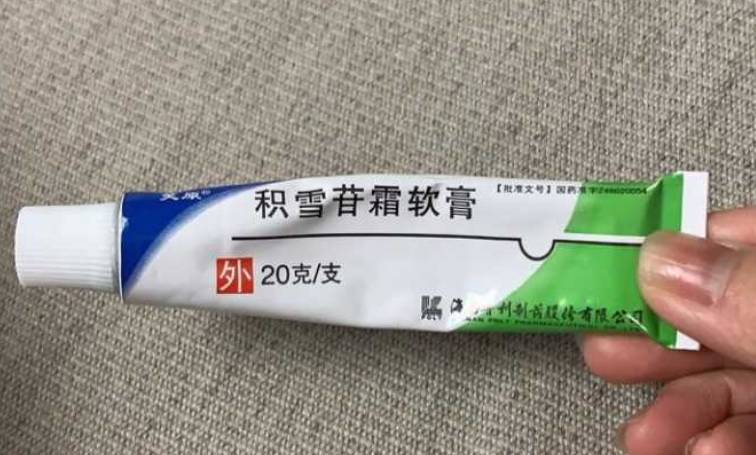
Asiaticoside can also inhibit the activation of the GRP78/PERK/CHOP pathway, inhibit apoptosis-related pathways, reduce the area of myocardial infarction, reduce the number of apoptotic cells, improve pathological changes in myocardial tissue, and exert a protective effect on cardiomyocytes [30].
In summary, asiaticoside can reduce the release of cytokines, inflammatory factors and other mediators by regulating multiple signal pathways such as TGF-β/Smad, NF-κB, p38-MAPK, cAMP/PKA and PI3K/Akt, exerting anti-inflammatory, anti-fibrosis, scar formation inhibition and cognitive improvement effects. It is used to treat liver and lung fibrosis, cardiovascular disease, hypertrophic scars, tumors, osteoporosis and other related diseases.
There are no clear reports on the mechanism of action of asiaticoside, the most appropriate dosage, or whether long-term use will have toxic side effects on human organs. Most studies are still at the stage of experimental animal models, and there are few reports of clinical applications. As research continues to deepen, the mechanism of action of asiaticoside will gradually be elucidated, opening up the prospect of its clinical application.
References
[1] Lv J, Sharma A, Zhang T, et al. Pharmacological review on asiatic acid and its derivatives: A potential compound [J]. SLAS Technol, 2018, 23 (2): 111-127.
[2] Nowwarote N, Osathanon T, Jitjaturunt P, et al. Asiaticoside induces type Ⅰcollagen synthesis and osteogenic differentiation in human periodontal ligament cells. Phytother Res, 2013, 27 (3): 457-462.
[3] Zeng Huifen, Wang Qingwen. Research progress of transforming growth factor-β and its Smad signal transduction [J]. Chinese Medicine and Clinical, 2010, 10 (10): 1145-1147.
[4] Hu HH, Chen DQ, Wang YN, et al. New insights into TGF-β/Smad signaling in tissue fibrosis [J]. Chem Biol Interact, 2018, 292: 76-83.
[5] Pan Shu, Li Tianzeng, Li Yeyang, et al. Effects of asiaticoside on proliferation of proliferative scar fibroblasts and Smad signaling pathway [J]. Chinese Journal of Plastic and Reconstructive Surgery, 2004 (4): 291-294.
[6] Zhang Z, Ma J, Feng R, et al. Centella asiatica inhibits renal interstitial fibrosis by regulating Smad3 and Smad7 expression in the TGF-β signaling pathway [J]. Int J Clin Exp Pathol, 2018, 11 (2): 1009-1017.
[7] Wang XB, Wang W, Zhu XC, et al. The potential of asiaticoside for TGF-β1/Smad signaling inhibition in prevention and progression of hypoxia-induced pulmonary hypertension. Life Sci, 2015 (137): 56-64.
[8] Ji Qijian, Xu Tie. Protective effect of asiaticoside on bleomycin-induced pulmonary fibrosis in rats [J]. Modern Medicine, 2014, 42 (11): 1304-1309.
[9] Tang B, Zhu B, Liang Y, et al. Asiaticoside suppresses collagen ex- pression and TGF-β/Smad signaling through inducing Smad7 and inhib- iting TGF-β RⅠand TGF-β RⅡ in keloid fibroblasts[J]. Arch Dermatol Res, 2011, 303 (8): 563-572.
[10] Zhang T, Dai J, Ye W, et al. Asiaticoside attenuates bleomycin-induced pulmonary fibrosis in A2aR-/ -mice by promoting the BMP7/Smad1/5 signaling pathway. Biochem Biophys Res Commun, 2020, 527 (3): 662-667.
[11] Dolcet X ,Llobet D ,Pallares J ,et al.NF-κB in development and progression of human cancer [J].Virchows Arch ,2005 ,446 (5) : 475-482.
[12] Qiu J, Yu L, Zhang X, et al. Asiaticoside attenuates lipopolysaccharide-induced acute lung injury via down-regulation of NF-κB signaling pathway [J]. Int Immunopharmacol, 2015, 26 (1): 181-187.
[13] Zhang T, Cai H, Yang L, et al. Asiaticoside alleviates hypoxic pulmonary hypertension in mice by inhibiting the NF-κB/p38 pathway.
Chinese Journal of Pathological Physiology, 2019, 35 (9): 1600-1607. [14] Luo Y, Fu C, Wang Z, et al. Asiaticoside attenuates the effects of spinal cord injury through antioxidant and anti-inflammatory effects, and inhibition of the p38-MAPK mechanism [J]. Mol Med Rep, 2015, 12 (6): 8294-8300.
[15] Xing Y,Ji Q ,Li X ,et al.Asiaticoside protects cochlear hair cells from high glucose-induced oxidative stress via suppressing AGEs / RAGE / NF-κB pathway [J].Biomed Pharmacother ,2017 ( 86 ) : 531-536.
[16] Yin Z, Yu H, Chen S, et al. Asiaticoside attenuates diabetes-induced cognition deficits by regulating PI3K/Akt/NF-κB pathway. Behav Brain Res, 2015 (292): 288-299.
[17] Zhou Y, Wang S, Zhao J, et al. Asiaticoside attenuates neonatal hypoxic-ischemic brain damage through inhibiting TLR4/NF-κB/STAT3 pathway. Ann Transl Med, 2020, 8 (10): 641.
[18] He L, Hong G, Zhou L, et al. Asiaticoside, a component of centella asiatica attenuates RANKL-induced osteoclastogenesis via NFATc1 and NF-κB signaling pathways. J Cell Physiol, 2019, 234(4): 4267-4276.
[19] Lee S, Rauch J, Kolch W. Targeting MAPK signaling in cancer: mechanisms of drug resistance and sensitivity. Int J Mol Sci, 2020, 21(3): 1102-1130.
[20] Cuenda A, Rousseau S. p38 MAP-kinases pathway regulation, func- tion and role in human diseases.
Biochem Biophys Acta, 2007, 1773 (8): 1358-1375. [21] Yang XW, Lian FM. Research progress on the pharmacological effects and mechanisms of madecassoside [J]. Chinese Journal of Modern Applied Pharmacy, 2020, 37 (7): 891-896.
[22] Wang Yuran. Research on the mechanism of madecassoside inhibiting oxidative stress in human peritoneal mesothelial cells induced by high glucose peritoneal dialysis fluid [D]. Jiangsu: Nanjing University of Traditional Chinese Medicine, 2017.
[23] Cao W ,Li XQ ,Zhang XN ,et al.Madecassoside suppresses LPS- induced TNF-alpha production in cardiomyocytes through inhibition of ERK ,p38 ,and NF-kappaB activity [J].Int Immunopharmacol, 2010 ,10 (7) : 723-729.
[24] Chen S, Yin ZJ, Jiang C, et al. Asiaticoside attenuates memory impairment induced by transient cerebral ischemia-reperfusion in mice through anti-inflammatory mechanism.
[25] Zhang L, Li HZ, Gong X, et al. Protective effects of asiaticoside on acute liver injury induced by lipopolysaccharide/D-galactosamine in mice. Phytomedicine, 2010, 17(10): 811-819.
[26] Luo J, Zhang T, Zhu C, et al. Asiaticoside might attenuate bleomycin-induced pulmonary fibrosis by activating cAMP and Rap1 signalling pathway assisted by A2AR. J Cell Mol Med, 2020, 24 (14): 8248-8261.
[27] Wang L, Guo T, Guo Y, et al. Asiaticoside produces an antidepressant-like effect in a chronic unpredictable mild stress model of depression in mice, involving reversion of inflammation and the PKA/pCREB/BDNF signaling pathway. Mol Med Rep, 2020, 22 (3): 2364-2372.
[28] Dai Libing, Pan Shu, Shen Yan, et al. Effects of asiaticoside on connective tissue growth factor and RhoA/ROCK-I regulatory signals in proliferative scar fibroblasts. Chinese Journal of Pharmacy, 2010, 45 (14): 1067-1072.
[29] Nie X, Zhang H, Shi X, et al. Asiaticoside nitric oxide gel accelerates diabetic cutaneous ulcers healing by activating Wnt/β-catenin signaling pathway. Int Immunopharmacol, 2020 (79): 1-15.
[30] Yang Yong, Yin Hongzhen, Hu Yunfei. Research on the cardioprotective effect of asiaticoside regulating the GRP78/PERK/CHOP pathway in rats with acute myocardial infarction. Chinese Journal of Traditional Chinese Medicine, 2019, 28 (9): 1571-1575.


 English
English French
French Spanish
Spanish Russian
Russian Korean
Korean Japanese
Japanese